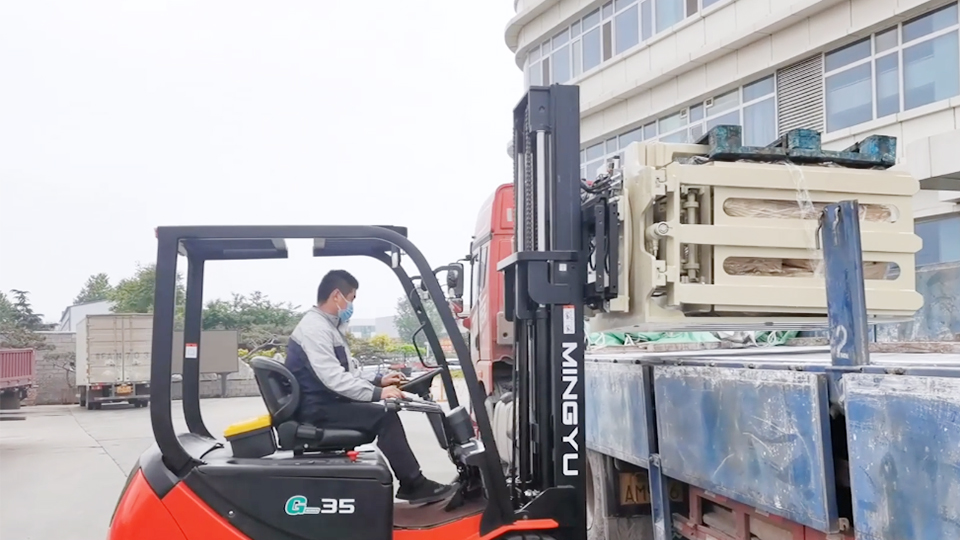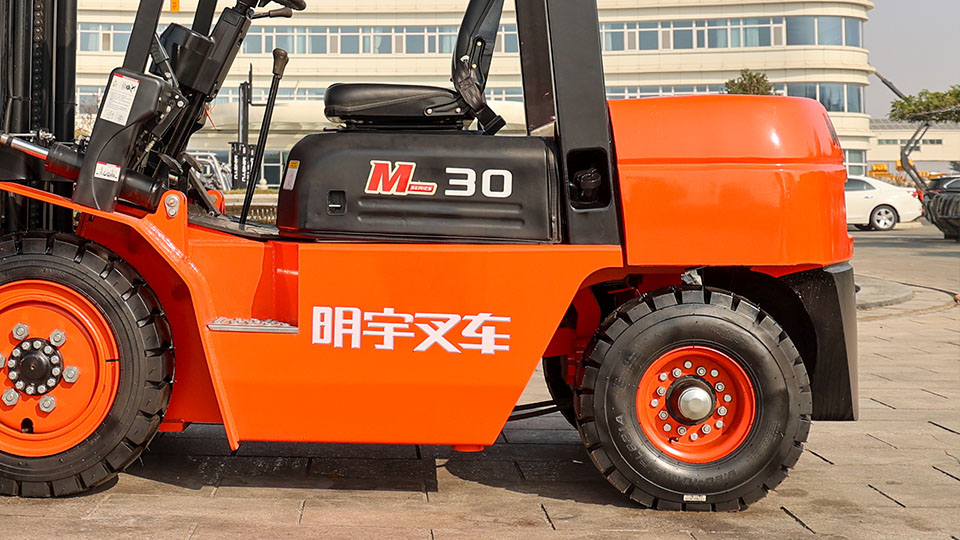
A Technical and Linguistic Analysis of the Terminology for "Forklift" Across the Spanish-Speaking World
Introduction: The Translation of Industrial Power
The motorized industrial truck commonly known as a forklift is a cornerstone of modern logistics, manufacturing, and warehousing. Its function—to lift and transport heavy loads short distances—is universal, yet the terminology used to describe this essential piece of equipment varies significantly across the 21 nations where Spanish is the official language. A simple query, "How do you say forklift in Spanish?" opens a fascinating technical and linguistic rabbit hole, revealing not just different words, but distinct industrial standards, regional influences, and historical linguistic evolution.
This technical article undertakes a comprehensive analysis of the Spanish terminology for "forklift," examining the most common terms, their precise technical contexts, the influence of Anglicisms, and the subtle yet crucial regional variations that impact international trade, technical documentation, and safety protocols.
I. The Principal Technical and Linguistic Equivalents
The Spanish language does not rely on a single, universally accepted term for "forklift." Instead, three primary terms dominate, each with varying degrees of technical formality and regional prevalence.

A. The Dominant Technical Term: Carretilla Elevadora
Linguistic Status: This is arguably the most technically precise and broadly understood term across Spain (the Iberian Peninsula) and much of Latin America, particularly in professional and academic documentation.
Etymological Breakdown:
Carretilla: Diminutive of carreta (cart or wagon), meaning a small cart, often hand-pushed (like a wheelbarrow or hand truck).
Elevadora: Adjective meaning "lifting" or "elevating."
Technical Precision: Carretilla elevadora is a descriptive compound noun that perfectly encapsulates the machine's function: an elevating cart. In technical manuals (ISO 3691 and regional derivatives), safety certifications, and specialized machinery catalogs, this term is frequently prioritized for its clarity and functional accuracy. It acts as the de facto standard in European Spanish and a major standard in global technical Spanish.
Variations and Technical Context: The full, technically explicit term is sometimes carretilla elevadora de horquilla (lifting cart with a fork), which explicitly translates the "fork" component, though the shortened form is more common.
B. The Globalized and Functional Term: Montacargas
Linguistic Status: This term is highly prevalent, especially in Mexico, Central America, and several Andean nations (e.g., Colombia, Ecuador, Peru). It often competes with carretilla elevadora as the most recognized translation.
Etymological Breakdown:
Montar: Verb meaning "to load," "to mount," or "to assemble."
Cargas: Plural noun meaning "loads" or "cargo."
Technical Precision: Montacargas literally translates to "load lifter" or "cargo mounter." Its technical scope is slightly broader, as it can occasionally refer to other types of vertical lifting devices, such such as a freight elevator or a simple hoist in a non-industrial context. However, when used in a warehousing or logistics environment, it is overwhelmingly understood to mean a forklift. Its prevalence in the Americas reflects a focus on the action (lifting the load) rather than the device itself (the wheeled cart).
Technical Ambiguity: While common, translators must be aware of the ambiguity. In architectural plans, a montacargas must often be clarified as montacargas industrial or montacargas de almacén to differentiate it from a standard service lift.
C. The Direct Anglicism and Regional Slang: Forklift / Fórclif
Linguistic Status: The direct adoption of the English term is increasingly common in areas with strong economic ties to the United States (e.g., border regions of Mexico, Puerto Rico, Panama) or in large multinational corporate environments.
Anglicism Forms:
Forklift: Used unadapted, particularly in written technical documents where a direct one-to-one translation is sought for ease of cross-referencing or where the original English manual is being used as a template.
Fórclif or Forkliff: Phonetic spellings are sometimes encountered in informal spoken language or unedited internal documents. These are generally considered incorrect by official linguistic bodies but demonstrate the pervasive nature of the English term.
Technical Implication: The use of the Anglicism indicates a high level of operational integration with global standards (often US-based), but it can lead to confusion when dealing with local labor forces or regional governmental compliance bodies that require formally standardized Spanish terminology.
II. Regional Variations and Specialized Terminology
The industrial landscape of the Spanish-speaking world is not monolithic. The term used for "forklift" is a powerful linguistic indicator of regional industrial norms and the historical origin of the machinery imported into that country.
|
Country/Region |
Primary Term(s) |
Notes on Usage and Context |
|
Spain (España) |
Carretilla Elevadora |
The undisputed standard; highly formalized in technical and safety regulations. |
|
Mexico |
Montacargas |
Dominant term; Carretilla Elevadora is understood but less common. |
|
Argentina, Uruguay |
Autoelevador |
A specific compound term: Auto (self-propelled) + Elevador (lifter). Highlights the self-powered nature of the machine. |
|
Chile |
Grúa Horquilla |
Literally "Fork Crane." Emphasizes the lifting mechanism (grúa) and the fork structure. Highly descriptive. |
|
Venezuela, Colombia |
Montacargas, Carretilla |
Montacargas is widely used. Carretilla (by itself) is sometimes used as a shorthand in warehouses but can be ambiguous. |
|
Cuba, Puerto Rico, Dominican Rep. |
Forklift, Montacargas |
Strong influence from U.S. industrial and trade practices leads to a heavy use of the unadapted Anglicism. |
The term Autoelevador, prevalent in the Southern Cone, provides a valuable technical distinction: it stresses the machine's characteristic as a self-propelled vehicle (a motorized lift) rather than a simple human-pushed lift. This terminological choice reflects a technical emphasis on the vehicle's independent power source and mobility, a key feature that separates forklifts from non-motorized material handling equipment.
III. Technical Sub-Classification Terminology
A full technical discussion of the "forklift" must extend beyond the main noun to the specific types of equipment, which have their own precise Spanish terms, reflecting international classification standards (e.g., ITA Classifications).
A. Reach Trucks and Specialized Lifts
|
English Term |
Standard Spanish Term(s) |
Technical Distinction |
|
Reach Truck |
Carretilla retráctil |
Characterized by the ability to extend the load (mast/forks) forward and beyond the stabilizing legs (retráctil = retractable). |
|
Pallet Jack |
Transpaleta |
A non-stacking hand truck or motorized low-lift truck, specifically for horizontal movement of pallets. |
|
Order Picker |
Recoge pedidos |
A vertical lifting truck designed to lift the operator to different levels of racking for manual picking of goods. |
|
Hand Pallet Truck |
Transpaleta manual |
Non-motorized equipment for moving pallets on the floor level. The manual distinction is crucial. |
The use of the specific adjective (e.g., retráctil) is essential for technical procurement and safety training. Misidentifying a carretilla elevadora as a carretilla retráctil can lead to incorrect training regarding load capacity, aisle width requirements, and stability zones.
B. Components and Operation
Technical communication also requires accurate translation of the forklift's primary components:
|
English Component |
Standard Spanish Translation |
Technical Context |
|
Fork |
Horquilla / Diente |
Horquilla (fork/wishbone) is the formal term; Diente (tooth) is sometimes used informally. |
|
Mast |
Mástil |
Used across all regions, referring to the vertical assembly that performs the lifting and tilting. |
|
Load Capacity |
Capacidad de carga |
Essential metric, often expressed in kilograms (kg) or metric tons (toneladas). |
|
Counterweight |
Contrapeso |
The heavy mass integrated into the rear of the truck, crucial for stability and load balance calculations. |
|
Tines |
Uñas |
Another informal term for the forks, literally meaning "fingernails" or "claws." |
IV. Impact on Technical Documentation and Safety Standards
The variation in terminology has direct, tangible consequences in industrial practice, particularly in two critical areas:
A. Global Supply Chain and Procurement
Companies operating across multiple Spanish-speaking countries must standardize their parts and equipment procurement language. A purchase order for a "Montacargas - TIPO II" in Mexico might correspond to a "Carretilla Elevadora Contrapesada Eléctrica" in Spain. Technical documentation must utilize a glossary of terms, often listing the regional variants explicitly, to ensure the correct material handling equipment (MHE) is ordered, calibrated, and maintained. The financial implications of ordering the wrong part (e.g., an attachment for a Montacargas that doesn't fit the Autoelevador) are significant.
B. Operator Training and Safety Protocols (OSHA/AEM)
Safety and operational training (often based on standards like those from OSHA or AEM) must be linguistically tailored. The technical operator manual for a "Clase 4: Internal Combustion Engine Truck" will rely on the locally accepted term.

In Spain, safety documents often mandate that the operator is a certified "Operador de Carretillas Elevadoras." In Argentina, the term might be "Conductor de Autoelevadores." The technical safety instruction—"Ensure the Contrapeso is secured and inspect the Horquillas for fatigue cracks"—must be delivered using the language that resonates instantaneously with the local workforce, minimizing the risk of misunderstanding the critical components of the stability triangle or load center.
Conclusion: Beyond Simple Translation
The translation of "forklift" in Spanish is far more complex than finding a single word. It is a technical problem that requires understanding industrial standards, geographical linguistic evolution, and the specific functional emphasis embedded in each term.
The technically correct and most universally accepted term, particularly in formal documentation, remains Carretilla Elevadora. However, the operational and regional dominance of Montacargas and Autoelevador cannot be ignored.
For any technical professional, logistics expert, or translator working within the Spanish-speaking industrial world, the key is to move beyond the dictionary and adopt a regional, context-specific approach. Effective communication in this sector demands not just a knowledge of the different Spanish words, but a deep technical appreciation for the subtle yet vital differences they imply about the machine's power source, classification, and operational context. The way an industrial truck is named reflects its position and function within the entire logistical chain, making the answer to "How do you say forklift in Spanish?" a technical specification in itself.
Name: selena
Mobile:+86-13176910558
Tel:+86-0535-2090977
Whatsapp:8613181602336
Email:vip@mingyuforklift.com
Add:Xiaqiu Town, Laizhou, Yantai City, Shandong Province, China